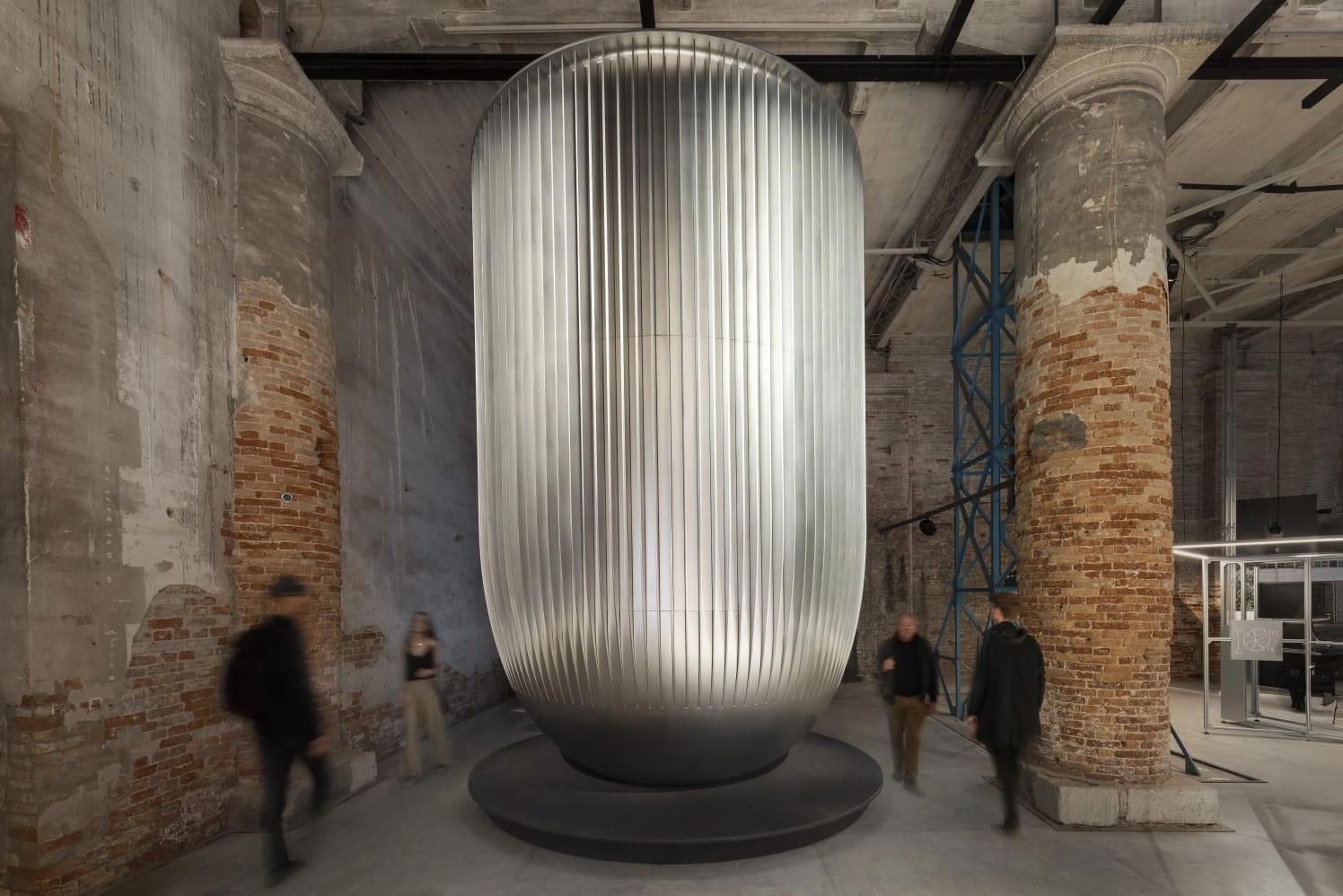
Pininfarina, Newcleo, and Fincantieri: The Future of Nuclear Energy at the Venice Biennale
TL-40 Nuclear Reactor
Pininfarina, a global icon of Italian design, leads the creative vision of the innovative nuclear startup newcleo, on the occasion of the 19th International Architecture Exhibition - The Venice Biennale. Together with Fincantieri, these three prestigious companies take up the challenge of showcasing one of the most advanced clean energy production and sustainable design solutions, thus addressing two of the most pressing issues of our time: climate change and decarbonization.
Combining technological vision, industrial expertise and cutting-edge design, the companies have collaborated with the goal of redefining the social image of nuclear energy, asking visitors to forget everything they know about it and let themselves be guided on a highly interactive journey to discover the extraordinary opportunities offered by fission of atoms in combating climate change and decarbonizing human activities.
At the center of the joint project, housed inside the Corderie of the Venice Arsenal, is a full-size reproduction of the TL-40 liquid-lead cooled nuclear reactor engineered by newcleo, a safe, sustainable and compact reactor developed for use in propelling large ships.
Guided through an immersive experience, visitors will discover how the reactor works, its ability to burn waste produced by conventional nuclear power plants, and its passive safety features that make it an ideal solution for powering energy-intensive human activities in a sustainable and decarbonized manner.
Pininfarina has endowed the object with a set of aesthetic and symbolic qualities that enhance its attractiveness and appeal, while making it both explorable and accessible to public understanding. What is presented to the eyes of visitors to the Architecture Biennale is, in fact, a reactor conceived in an open configuration, entirely observable from all angles and enriched by multiple elements of surprise.
Its distinctive shape, evocative of the lines of a large vase, suggests a sense of suspension and lightness, in stark contrast to its actual mass of more than two thousand kilograms. The outer shell, made of fiberglass, is distinguished by a moiré-effect motif of closely spaced lamellae, which enhances the sinuosity of the lines, generates refined plays of light and shadow, and lends an additional hypnotic effect to the entire structure, which is about five and a half meters high.
Conceived by designers with an open-section approach, the reactor allows a direct view of its interior. The immersive experience at the heart of the machine allows visitors to grasp with immediacy the principles and processes that govern power generation.
To make them even clearer, a system has been set up for interactive visualization of data and information on nuclear energy and its role within the decarbonization process of energy systems.
In fact, the installation will reveal the effectiveness of nuclear power in decarbonizing marine transport, as well as the potential contained in Europe's existing nuclear waste that would be sufficient to power electricity demand on the continent for hundreds of years. The design conceived by Pininfarina takes the form of a tool in the service of collective knowledge and awareness. Through a process of refined mediation, concepts of high complexity are translated into accessible forms, yet without ever sacrificing scientific rigor and precision. This approach aims to contribute actively and responsibly to the challenge of social change, placing design at the crossroads of aesthetics, popularization and civic engagement.
Indeed, newcleo's fourth-generation small modular reactors represent a revolutionary approach to the decarbonization challenge by offering the answer to the perceived problems of traditional nuclear power. The innovative lead cooling system introduces passive safety systems that completely avoid the risk of nuclear accidents through the physical laws governing reactor operation. In addition, these reactors are able to eliminate nuclear waste generated by conventional nuclear power plants through a virtuous multi-cycle system that allows it to be burned generating clean, cheap and virtually inexhaustible energy.
It is also noteworthy that the installation presented in the Architecture Biennale is conceived according to the principles of sustainable and circular design. Indeed, it was aimed at eliminating waste, and extending the life cycle of materials while significantly reducing its environmental impact.
In fact, this work features a modular design that makes it easier - and therefore less impactful - to assemble, handle, and transport, thereby reducing carbon emissions. All of the elements that make up the installation will also find a second life after the exhibition, within a future newcleo location.
Within the collaboration, Pininfarina then oversaw the creative vision of the project by infusing sustainable design into the technological solutions, and bringing for the first time to the nuclear industry a creative vision that mixes technical and aesthetic elements to promote their understanding to a wide audience and, in the future, integration into urban and peri-urban environments.
Fincantieri complemented the project through its extensive experience in shipbuilding, studying a possible industrial application to the innovative newcleo solution. Thanks to its established know-how in managing complex projects, the company ensured the integration of the most advanced technological innovations in the shipbuilding industry, combining operational efficiency, sustainability and safety.
The joint project is more than an installation; it is a declaration of intent. In fact, the three companies are already working together to realize their shared vision. Fincantieri and newcleo have been collaborating since 2023 to study applications for ship propulsion of newcleo's technology. Similarly, Pininfarina is working with newcleo to design a nuclear fuel research and development center to be built in France, at Chusclan in the Gard region.
The unveiling of the collaboration within the context of the prestigious 19th International Architecture Exhibition of the Venice Biennale is a unique opportunity to show the world an innovative, unprecedented and futuristic vision of nuclear energy, far from the narratives of the past and capable of inspiring a near future where this inexhaustible source of clean energy will be at the service of humanity to enable the transformation of the energy system towards sustainable energies.